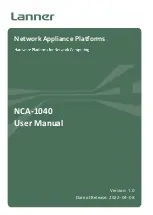
Detailed Installation
24
Figure 2.3
Terminating an Internal SCSI Disk Array
9) Power On Host System
Replace the computer cover, and reconnect the AC power cords. Turn power on to the
host computer. Ensure that the SCSI devices are powered up at the same time as, or
before, the host computer. If the computer is powered up before a SCSI device, the device
might not be recognized.
During boot, a BIOS message appears.
The firmware takes several seconds to initialize. During this time, the RAID Controller
SRCU42E scans the SCSI channel(s).
The BIOS Configuration utility prompt times out after several seconds. The second portion
of the BIOS message displays the Intel
®
RAID Controller SRCU42E number, firmware
version, and cache SDRAM size. The numbering of the controllers follows the PCI slot
scanning order used by the host system board.
Press <CTRL><G> to run BIOS Console
Terminator
ID2 – No Termination
ID1 – No Termination
ID0 – Boot Drive
No Termination
Intel RAID
Controller SRCU42E
SCSI ID 7
Host Computer










































